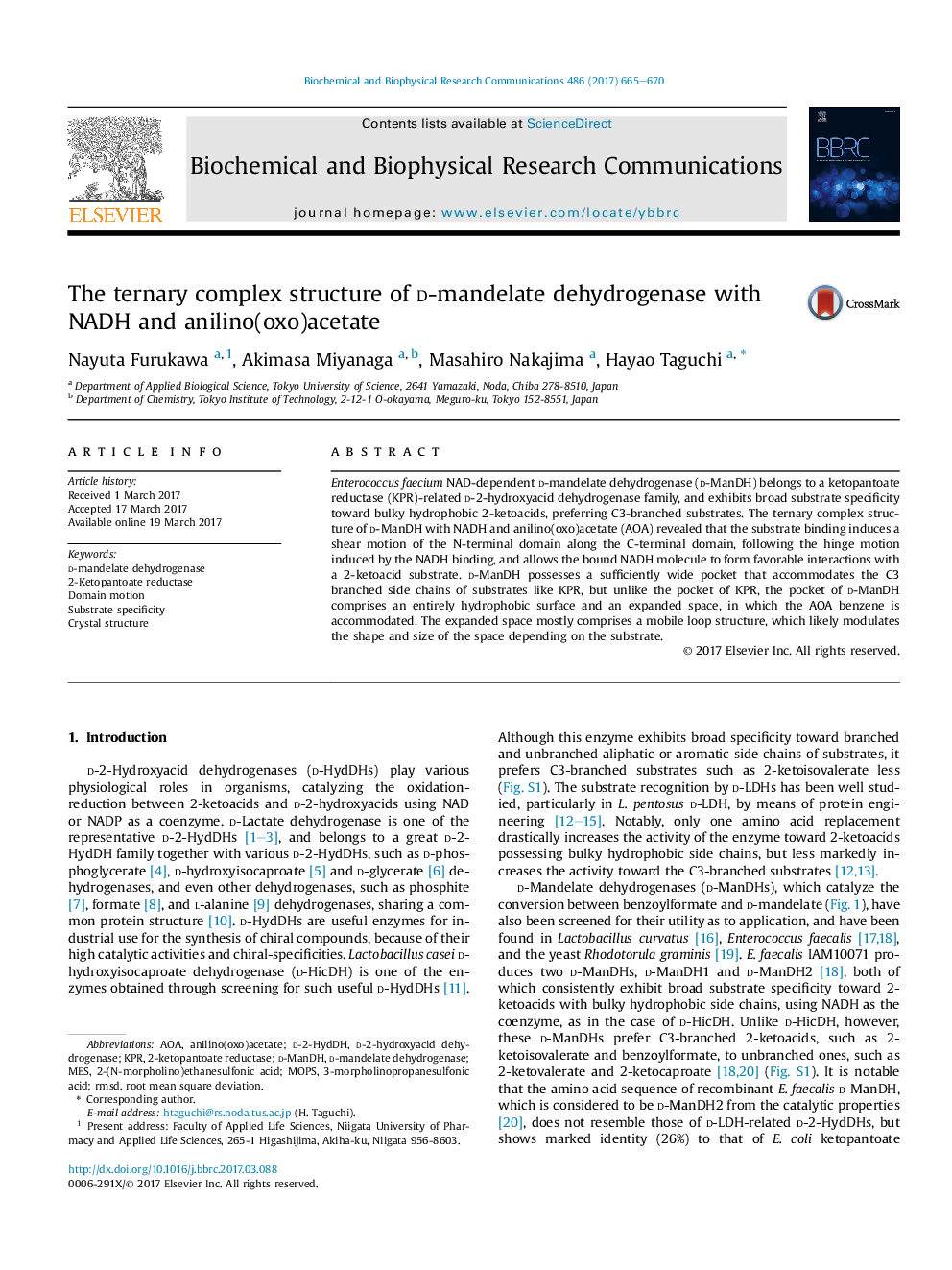| Article ID | Journal | Published Year | Pages | File Type |
|---|---|---|---|---|
| 5505028 | Biochemical and Biophysical Research Communications | 2017 | 6 Pages |
Abstract
Enterococcus faecium NAD-dependent d-mandelate dehydrogenase (d-ManDH) belongs to a ketopantoate reductase (KPR)-related d-2-hydroxyacid dehydrogenase family, and exhibits broad substrate specificity toward bulky hydrophobic 2-ketoacids, preferring C3-branched substrates. The ternary complex structure of d-ManDH with NADH and anilino(oxo)acetate (AOA) revealed that the substrate binding induces a shear motion of the N-terminal domain along the C-terminal domain, following the hinge motion induced by the NADH binding, and allows the bound NADH molecule to form favorable interactions with a 2-ketoacid substrate. d-ManDH possesses a sufficiently wide pocket that accommodates the C3 branched side chains of substrates like KPR, but unlike the pocket of KPR, the pocket of d-ManDH comprises an entirely hydrophobic surface and an expanded space, in which the AOA benzene is accommodated. The expanded space mostly comprises a mobile loop structure, which likely modulates the shape and size of the space depending on the substrate.
Keywords
Related Topics
Life Sciences
Biochemistry, Genetics and Molecular Biology
Biochemistry
Authors
Nayuta Furukawa, Akimasa Miyanaga, Masahiro Nakajima, Hayao Taguchi,
